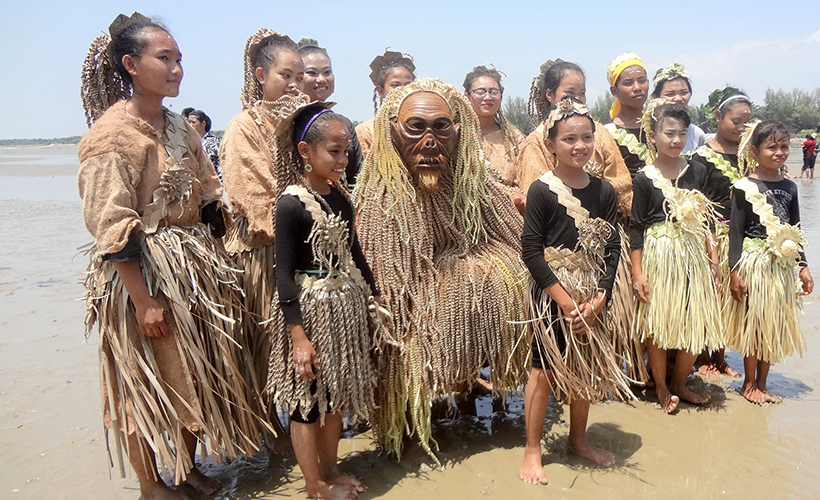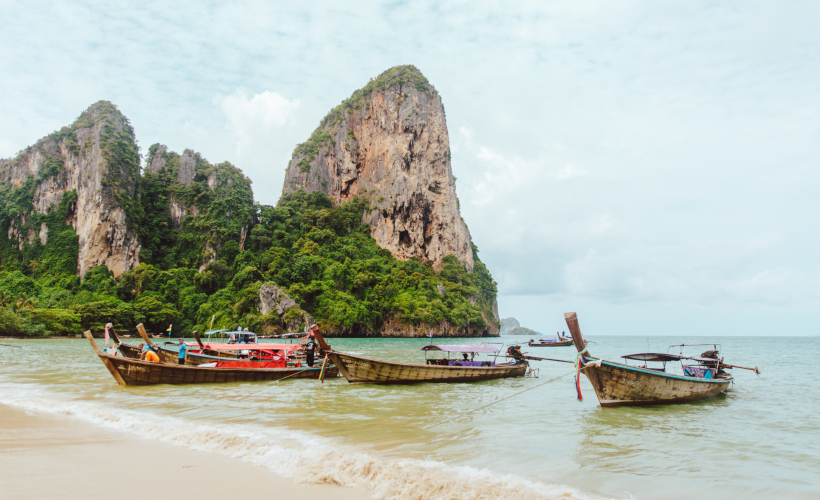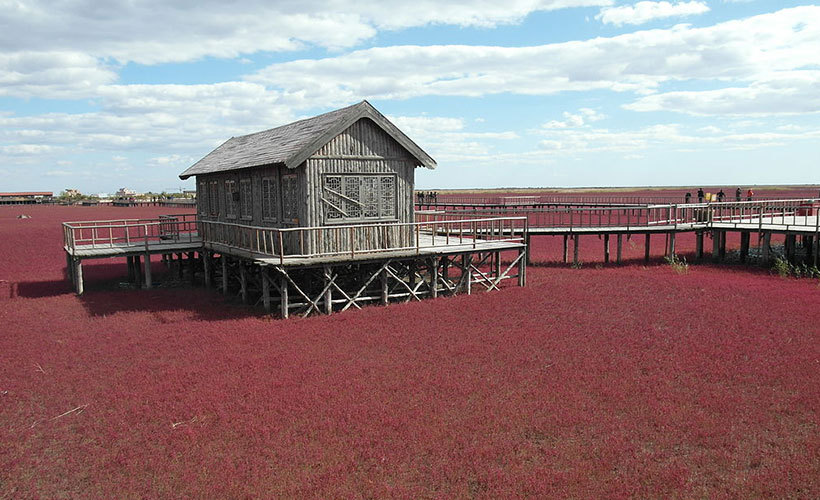
Before you imagine cherry-hued sand or Kool-Aid-tinted waters, know that the Red Beach in Panjin, China is actually the largest wetland and reed marsh in the world. That doesn’t sound anything like a great day at the beach, does it? So why go?
Seeing red
What this attraction in the north-eastern Chinese province of Liaoning does offer is a scarlet landscape as far as the eye can see. It’s made up of a sea of bright red suaeda salsa plants also known as seepweeds or sea-blites.
Although you can find seepweed on many beaches in the world, the conditions in Panjin combines alkaline-saline soil with unique biodiversity that creates these impressive colour changes in the seepweed. Also, depending on when you decide to visit, don’t always expect to see red either.
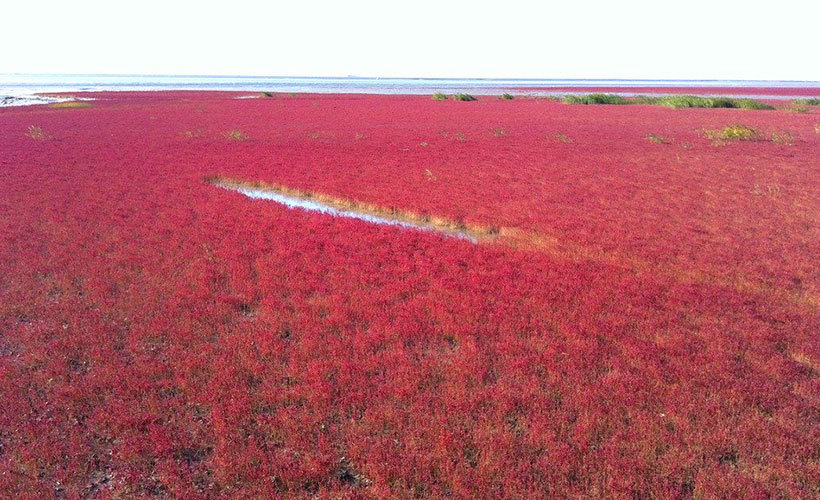
In the spring, the sprouts are green. The plants then turn jade green in early summer and bright red – crimson some might even say – during late summer and early autumn (between August and October), after which they slowly turn purple.
It’s also home to several rare species of wildlife. Over 400 species of wildlife live in the Red Beach area and about 250 species of birds stop over here on their annual migration between East Asia and Australia. Around 20 of the inhabitant bird species are protected. These include endangered species like the Red Crane and the Saunders’s gull.
Besides visiting the wharf, visitors can take a boat trip into the reed marsh from which they can see the rare Red-Crowned Cranes and other rare bird species. Keep in mind that if you want to see the birds, you might want to consider visiting in late summer since they head south for the winter.
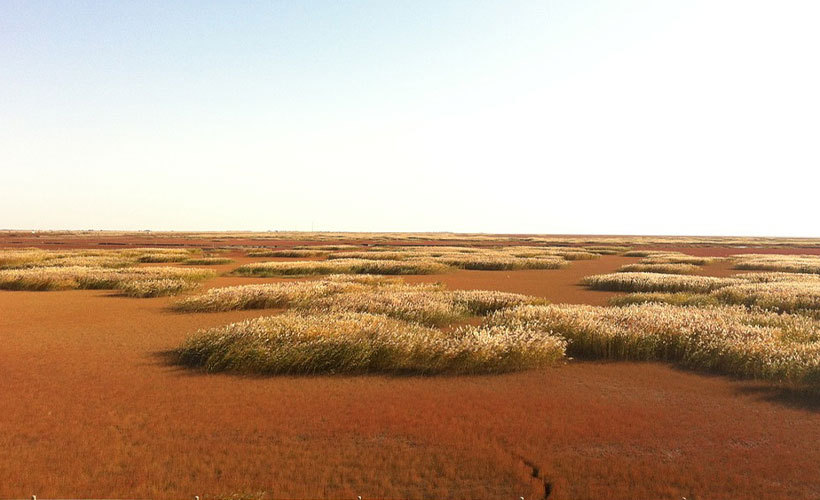
This scenic area is around 40 kilometres southwest of Panjin city. When here, visitors are required to stay confined to a one-kilometre-long wooden walkway as Red Beach is part of a protected nature reserve.
One thing’s for sure; we love being on the beach. Fortunately, we’ve got even better tropical getaways lined up for you (and your Instagram feed):
From Sandy White To All Black: Beaches Around The World
Beyond the sea
Once you’re done taking in the sights of this stunning locale, give Panjin city a go. It’s a young area, established in 1984 as a development by the oil industry. Since then, it has grown into a popular eco-tourist destination. Interestingly, although the area is a protected nature reserve, it’s also home to one of the largest oil fields in China – the Liaohe Oil Field.
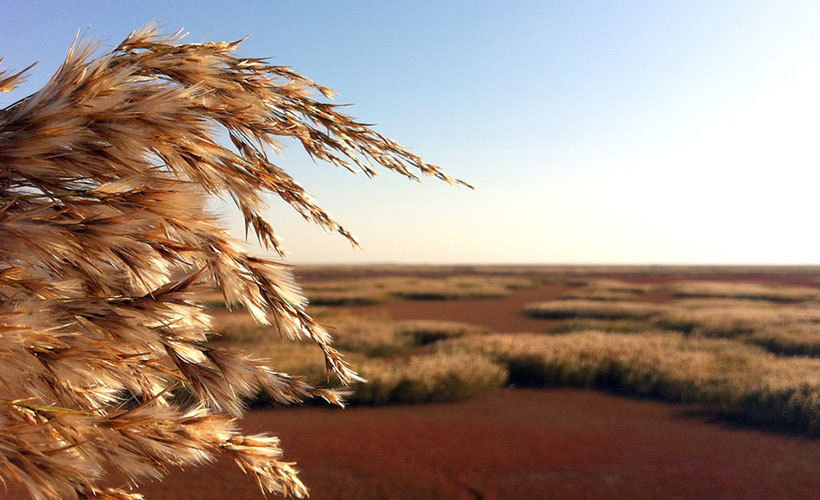
The oil field is an important contributor to the economy of Panjin, but its presence makes the protection of the wetlands that much more important. The challenge here is balancing the importance of both economic growth and the protection of a unique environmental area. Eco-tourism also plays a large part in the sustainability and growth of Panjin.
When it comes to food, Panjin is an important source for locals who enjoy mitten crabs as a delicacy. This is one of the few areas in northern China where rice is produced instead of wheat. The rice from this area is of such high quality that it was chosen to be the official rice of the 2008 Beijing Winter Olympics. About 85 per cent of the arable land consists of paddy fields. These paddies, like the seepweed, change colours according to the seasons. The paddies are green in spring and summer and golden in autumn.

